Although the building of internal versus external networks seems very different at first, the methods and rules are very similar. Seldom there are some rules only applicable to one of the networking applications. We have therefore put the whole concept of networking with partners in one module. We will start of by distinguishing between them, but then we will describe the methods as one body of information, implying that the methods are similar for internal and external networks.
Building Networks with Internal Business Partners
The relationships that managers build with other managers, i.e. managers of other departments as well as his/her superiors are equally important to team relations within a department.
These relationships that are built between departments can be called the ‘internal supplier-customer value chain’. As the name indicates, work is received by your department from your internal suppliers, the processing of work takes place within your department and work is delivered to your internal customers, who then repeat this process. The same rules for building relationships with other departments can also be applied to other internal business partners such as your manager, your subordinate managers, other entities within the company that you render a service to or that supplies you with goods/services. The process is illustrated in figure below:
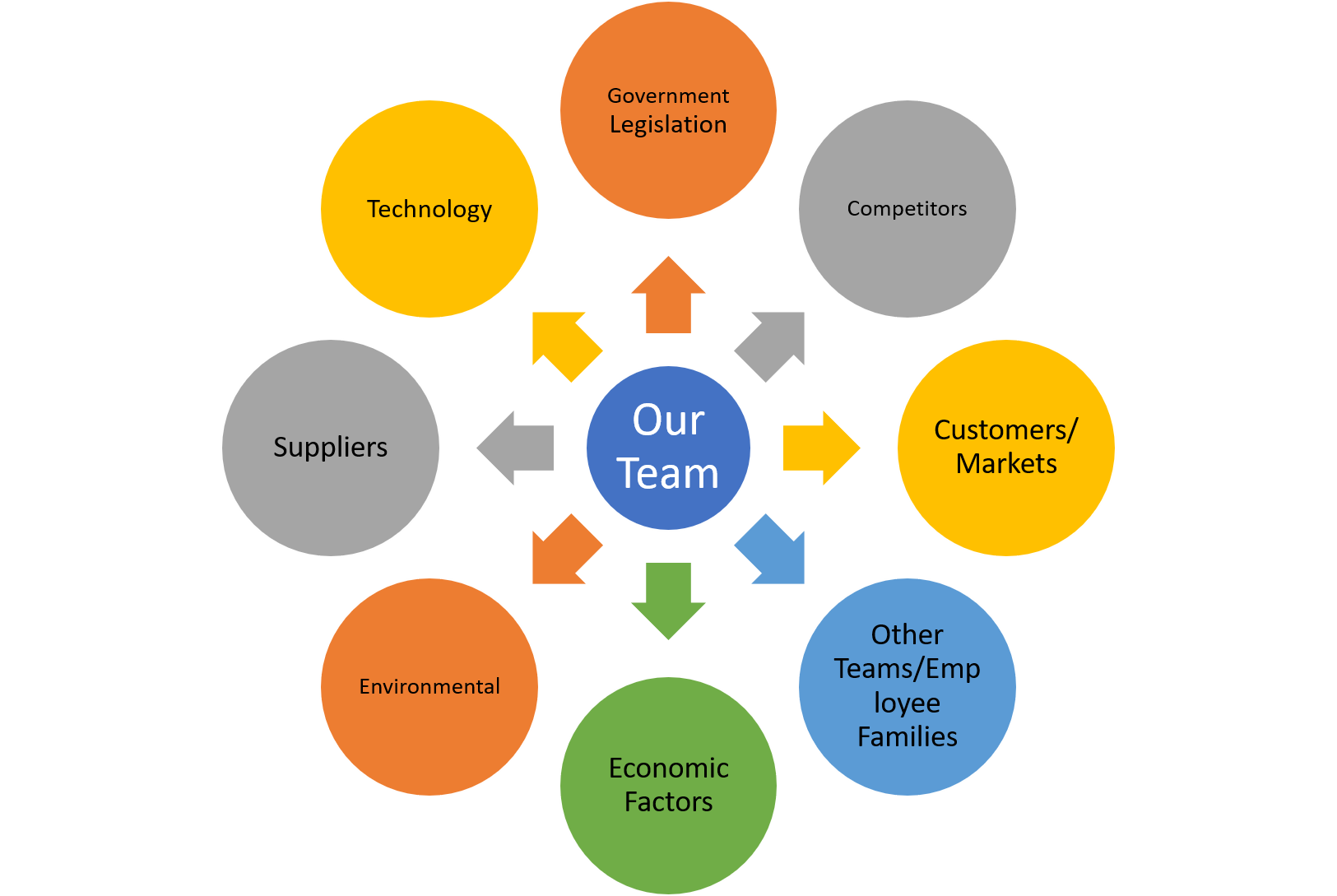
External Stakeholder Network
Building Networks with External Business Partners
In today’s volatile marketplace, a key responsibility of the team leader is to assist the team to adapt to the external environment. In fact, some literature talks about the boundary-less organisation, where the team leader needs to identify all means internally and externally which can assist the company to become more efficient. Some years back, it was only the marketing department and CEO who would be in contact with customers. Things have changed, and organisations increasingly set up cross functional network teams to improve on efficiency and customer service. The same can be said for other external relations such as corporate social responsibility, supplier relationships, benchmarking teams, etc.
Where the traditional leader will focus his attention on throughput; the new generation leader would empower his team to focus on throughput to leave him free to focus on the surrounding environment. This includes internal relationship environment with team members and other business partners (as discussed in module 2 and 3) as well as the external environment.
External environment could include issues like:
- Customer and vendor interactions
- Benchmarking with other companies/groups
- Assessing competitors and market opportunities
- Legal and community issues of importance
- Forecasting new technologies
- Building communication bridges with other groups (internally and externally)
- Forging important alliances
- Bringing training and development opportunities to the group
Companies usually have protocol, either official or not-official that regulates contact with external stakeholders. This would usually entail that you need to get permission from a Exco/Mancom member or the CEO himself to make external contact. Companies that promotes all levels of managers to ‘scan’ the external environment would usually approve processes and not only individual liaison events. All leaders need to be informed on the company protocol with regards to external stakeholder contact. This is a process that can easily turn haywire if not properly co-ordinated.
Framework For Setting Up And Management Of Internal And External Networks
The framework below describes how a company can manage external networks. Just as in the case of strategy, goals and objectives, the company on a strategic level (management or representative task team), would compile the framework first. After the company has decided on the general direction that external networks will be managed, each department needs to break it down to departmental external relationship management plans.
This framework can be used at company and departmental levels:

Analyse and Map Stakeholders
Before you make contact with external networks/business partners, it could be helpful to analyse your external environment first.
Firstly, it is important to identify who your external networks/business partners are, in other words who influences your business most.
The second step is to analyse stakeholders. In the analysis you need to ask the following questions:
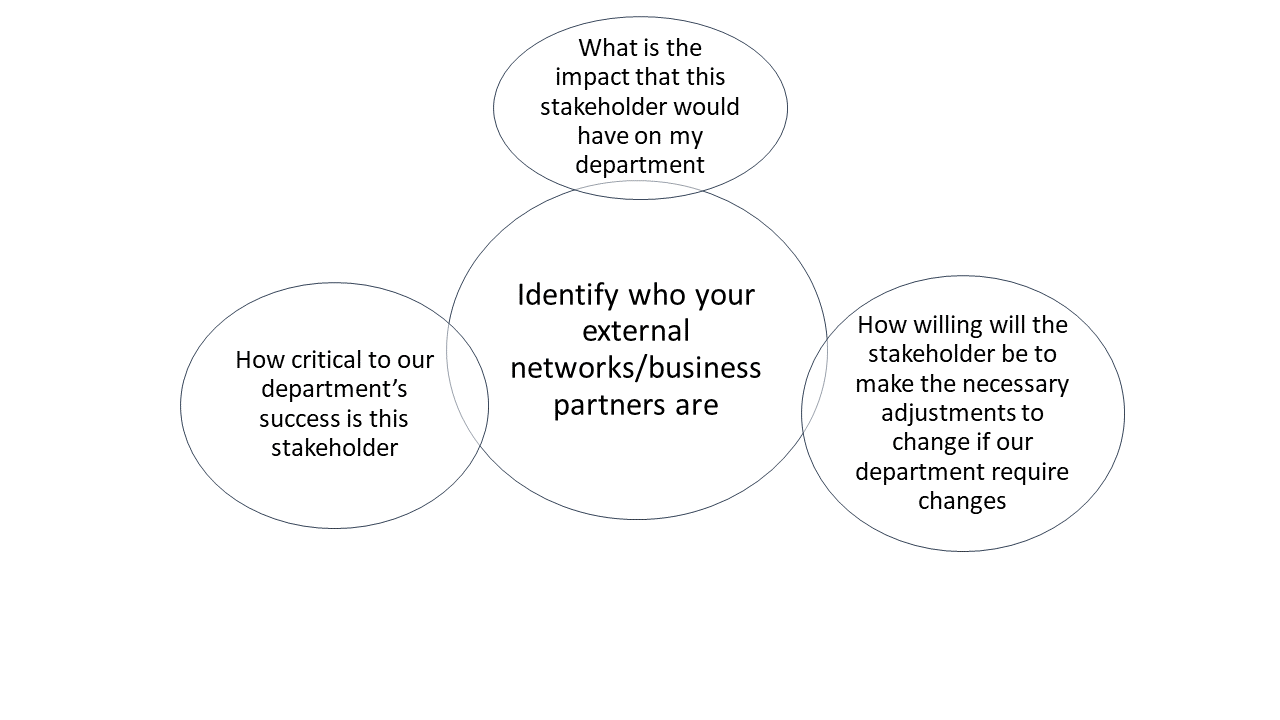
Click here to view a video that explains how to build a key stakeholder map.
Draw up Clear Expectations In A Service Level Agreement With Both Internal Suppliers And Customers.
The purpose of a service level agreement between internal business partners is to outline key deliverables as well frequency of review.
Example items which could be included in a service level agreement:
- Planning department to supply weekly production plan by the close of business on Thursday every week.
- Changes in production plan to be agreed between planning and production; a problem-solving exercise will be held to try and avoid the situation from happening again.
- High priority production items will be indicated on the plan.
- If production is unable to meet the plan, they will advice planning within two hours of the problem being identified.
- A representative from the planning department will attend the production meeting on the last Thursday of each month.
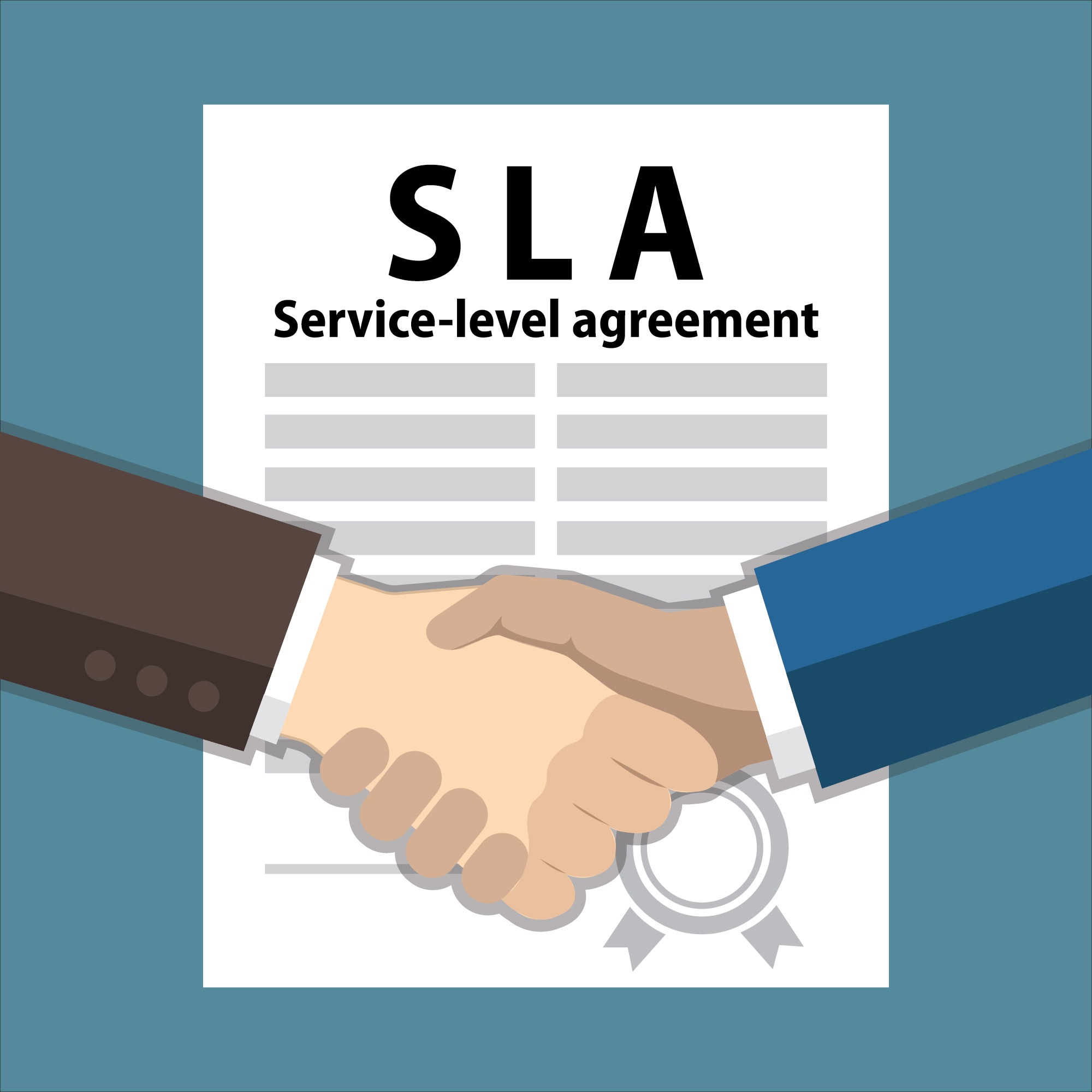
Click here to view a video that explains what is the difference between a SLA and a KPI.
Below is a tool to assist your team to summarise supplier commitments and customer expectations on one page.
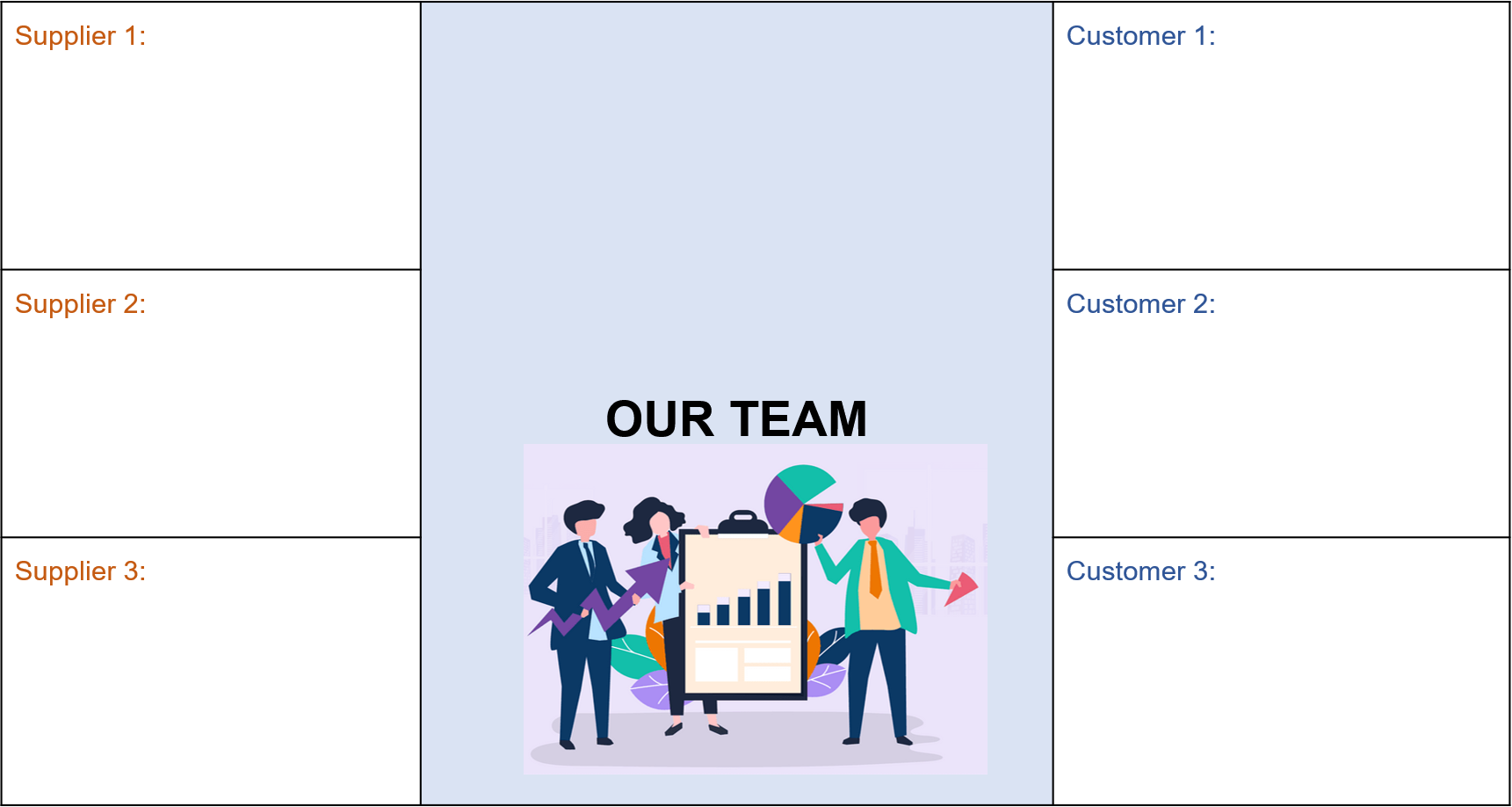
How to Develop the Communication Strategy and Plan
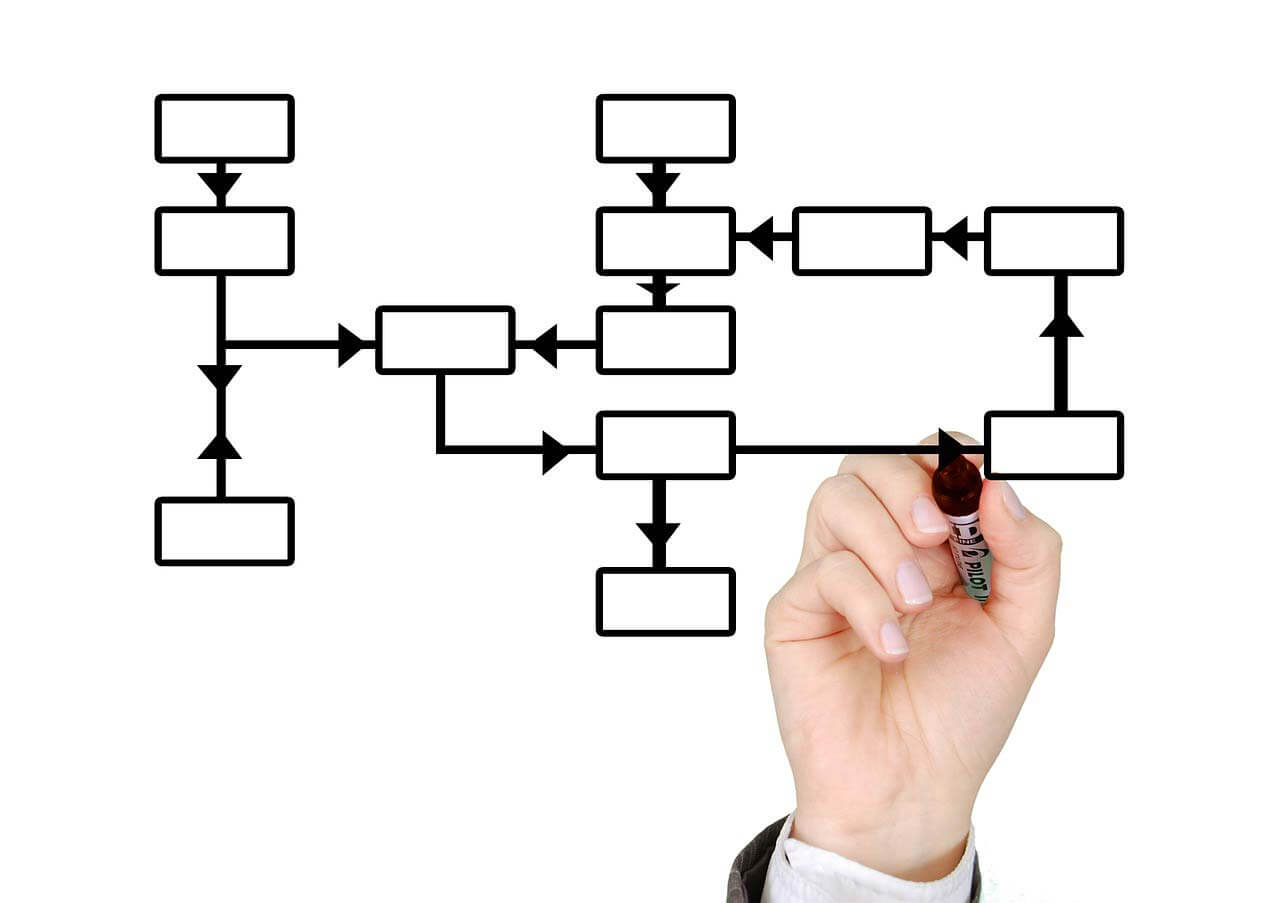
Define objectives. State the results you want to achieve. These might include:
- excellent service to customers,
- stakeholder loyalty,
- centralization of the communication effort,
- increased internal and external network teamwork,
- improved product delivery,
- visibility for the association and the industry or profession , and
- influence on government, media, consumers, and other audiences.
Define/review audiences. List all the audiences that your department might contact, attempt to influence, or serve. Included on your list may be. If you have already done this in your stakeholder analysis/mapping, skip this step.
Define goals. Break down objectives into smaller, do-able chunks. For example, if the objective is to improve customer service, goals might include improved training for your team on quality control, a manual for handling complaints, and ongoing information to customers. (Refer to SMART goals in module 1.)
Identify tools. Decide what tools will be used to accomplish stated goals. These tools can be anything from a simple flyer to a glossy magazine. Don't overlook less obvious tools such as posters, report covers and Web sites. Brainstorm ideas with your staff.
Establish a timetable. Once objectives, goals, audiences, and tools have been identified, quantify the results in a calendar grid that outlines roughly what projects will be accomplished and when. Separate objectives into logical time periods (monthly, weekly, etc.).
Evaluate the result. Build into your plan a method for measuring results. Your evaluation might take the form of:
- a monthly report on work in progress,
- formalized department reports for presentation at staff meetings,
- periodic briefings of the chief staff executive and the department heads, and
- a year-end summary for the annual report.
Developing a written communication plan will take effort. Plan on three or four days the first time you do it. Once in place, the written plan will smooth your job all year long, earn you respect from your managers and other staff, help set work priorities, protect you from last-minute demands, and bring a semblance of order to your chaotic job.
Select an Engagement Technique
Several techniques for stakeholder engagement exist. Choose one appropriate for the purpose you are engaging for:
If the purpose is communication related: Information sharing; project bulletins and letters to targeted audiences; company brochures and reports; internal and external newsletters; websites: technical briefings; speeches, conference presentations, displays, handouts, videos; open houses, tours; press releases, media advertising.
If the purpose is consultation: Questionnaire surveys; focus groups; workplace assessments; ad hoc meetings; standing stakeholder advisory forums; online feedback and discussion forums.
If the purpose is dialogue: Multi stakeholder forums; advisory panels; learnership summits; virtual engagement on intranets and internet.
If the purpose is partnerships: Joint ventures; local sustainable development projects; multi stakeholder initiatives; alliances.

Some important guidelines on engagement are:
Agree on the rules of engagement and understand each party’s role.
Be focused yet flexible: stick to your communication plan – engagement will be most successful if you remain focused.
Listen and be respectful: In networking with stakeholders you will do more listening than talk. You need to learn each other’s vocabulary and to influence or respect each other’s perceptions. Where trust is absent you will sometimes need an outside facilitator. (Refer to module 1 for effective listening skills.)
Operationalise: Commitment and response to stakeholders need to filter through to corporate decision making at all levels. It is exactly this requirement that has and will convince top management to filter engagement to all levels of the organisation, i.e. corporate and operational levels.
Follow-up: Setting targets, measuring and reporting on progress and offering an explanation on targets that has not been reached is important in meeting stakeholder expectations.
Some challenges of stakeholder engagement include:
It takes time and resources: If successfully managed, stakeholder relations grow, not fade. Additional stakeholders would like to engage. Some stakeholders need to be educated about the nature of the relationship. This can drain company resources as most companies are not set up to respond to all stakeholder concerns and comments. Priorities need to be set and budget needs to be adhered to.
It raises expectations which can sometimes be unrealistically high. You must be clear on what you can and cannot do.
Getting the right stakeholder to the table can be challenging: there can be conflicting demands amongst stakeholders. Companies or departments sometimes end up in acting to resolve problems between stakeholders. Again, you should continuously ask if this stakeholder engagement assist your business to reach its goals. If not the engagement should be discontinued. It is important though that you keep a long term view. Some relationships can be frustrating on the short term, but in the long term it would do more harm to discontinue it than to keep it going.
Create and Maintain a System for Feedback and Continuous Improvement

The same as with team and individual performance goals, business partners should agree on responsibilities, target dates/frequencies as well as how success will be measured. Business partner contact meeting frequency should be agreed upon. The meetings should be held to discuss the performance of each business partner against their agreed targets/goals. Performance improvement plans should be drawn up to foster a spirit of continuous improvement amongst business partners.
Studies on customer satisfaction have shown that dissatisfied customers seldom give verbal or written feedback to their suppliers, they simply quit buying from them. Although this is obviously studies on external customer relations, it could be applied to internal customer relations. When departments fail to deliver to their internal customers, the internal customer loses trust, engagement drops and relationships break down. In order to prevent this from happening, regular business partner contact is essential. Here are some guidelines when meeting with your internal customers:
Take one of your team member along when meeting with a business partner to assist in taking notes ensuring that all expectations are recorded; help with understanding the customer expectations; emphasise your commitment to good service to your customer; developing your own team members to appreciate customer expectations.
Develop good questions: In your preparation for the interview, define the information you would like to gain from the interview, and then draw up a set of questions to get the information. Open ended questions give the customer the opportunity to elaborate, discuss and give more data.
Get the specifics: If customer makes general, abstract statements, clarify it by getting the goal specific expectation, linking deliverables, timelines and performance measures to expectations. E.g. ‘What does quick turnaround time mean to you?’; ‘What would the ideal turnaround time be for you?”; What would the minimum acceptable turnaround time be for you?”
Listen, listen, listen: Do not use this interview to defend and market your department. The purpose of this interview is to understand how the customer regards your department. A good rule of thumb is that the customer should do 80% of the talking and you 20% mainly to clarify important points.
Avoid getting defensive: A natural reaction to negative feedback is to get defensive. Avoid this impulse. Rather seek to fully understand the specifics and how it affected the customer, agree on performance improvement.
Summarise what you heard: This helps you to check your understanding. Emphasize what you view the main points of the meeting. After summarising you can ask the customer ‘how did I do?’ and ‘do you have any points to add’.
Do not over commit: Do not give the impression that ‘all problems will be fixed’ if it is not the case. Rather under-promise and over-deliver than the other way around.
Provide follow-through and feedback: Make sure any promises made are carried out, and that you provide feedback to your customer. Remember to thank him/her for recommendations and explain what was done. This will assist to strengthen your relationship.
To summarise, here is an example of a Customer/Supplier Engagement Plan

Continuous Cycle of Improvement
To remain competitive, companies need to find a way to continuously improve their performance. Dr Edwards Deming, an American professor and father or the “Total Quality Movement” of the 1960’s, developed a cycle, called the Continuous Improvement Wheel. The principles of this wheel has enabled Toyota in Takaoka to set world class benchmarks in the motor industry. This plant was able to implement over 60 improvement ideas per person per year.
The Deming Cycle or Continuous Improvement Cycle looks as follows:
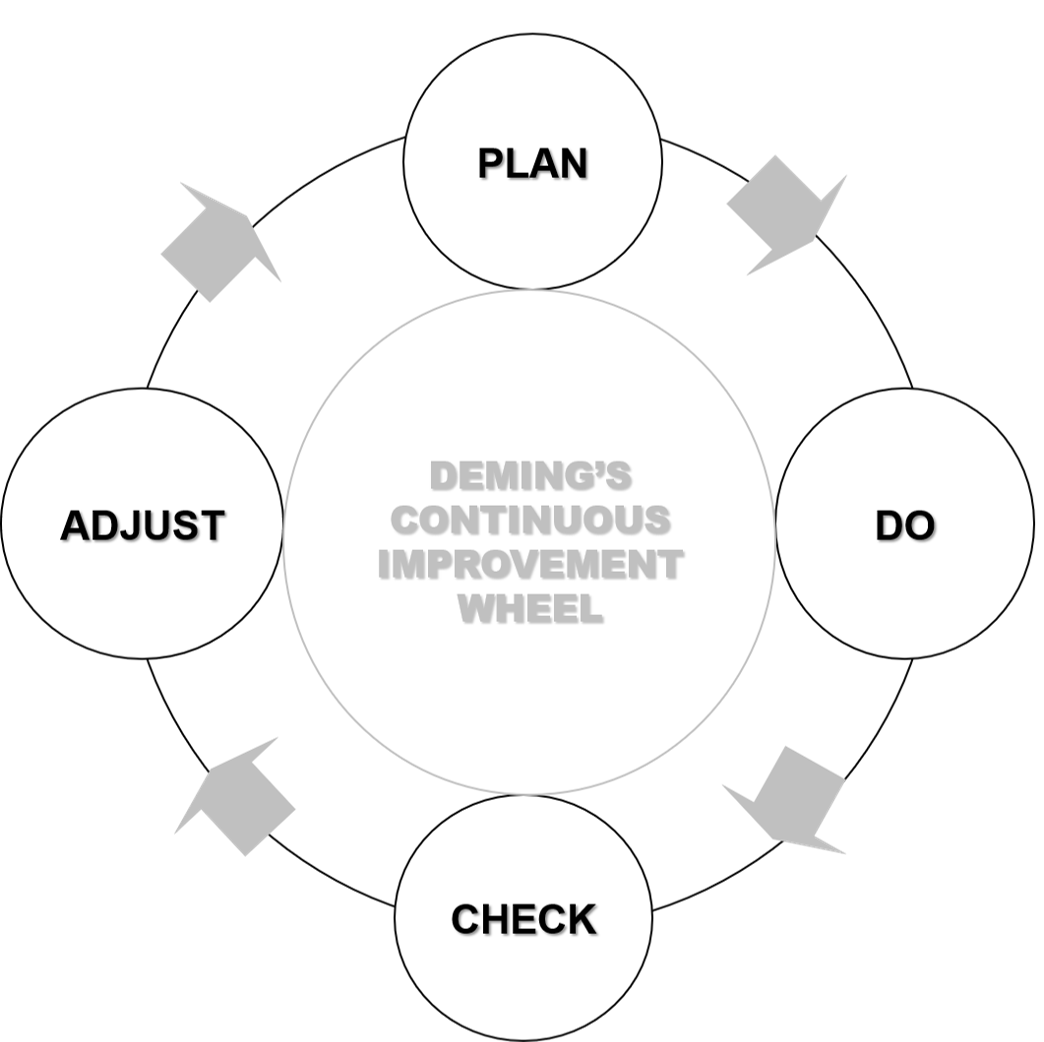
Plan
- Describe the results you want
- Clarify the standards (time, cost, quality etc.)
- List activities to achieve results
- Prioritise activities
- Determine the timing and duration of each
- Prepare a visual network to illustrate the activity sequence
- Draw a bar chart and display
- Allocate people and resources
Do
After planning, the plan must be implemented. Action is the most important.
Check
This step involves evaluation and measurement. The results of the ‘do’ step are checked. Progress is compared to set targets and indicated in a visual manner.
Adjust
This step involves standardisation of further improvements. If the results are as planned and required, the current method is captured in an Operating Procedure to ensure future success. When results are not as planned, the necessary adjustments need to be made and the cycle is repeated.
Click here to view a video that explains PDCA cycle for continuous improvement.